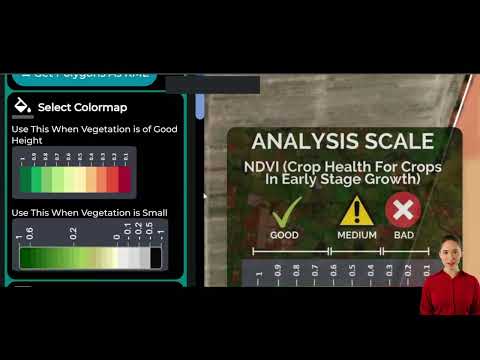New Zealand Tire Market 2025: Key Pricing & Demand Shifts
Meta Description: Discover key pricing, demand shifts, and sustainability trends in the New Zealand tire market 2025. Insights on regulations, regions, and adoption in agriculture, urban cycles, and e-commerce.
“Sustainable tires are projected to capture over 30% of New Zealand’s agricultural tire market share by 2025.”
- Market Overview: New Zealand Tire Market 2025
- Sustainability and Environmental Tire Regulations NZ
- Regulatory and Technology Shifts Driving Adoption
- Supply Chains, Import Dependency & Tire Pricing Trends New Zealand
- Regional Demand: Tailored Tire Solutions for New Zealand Agriculture
- E-Commerce and Online Tire Sales NZ Disrupting Traditional Marketplace
- Precision Farming Tires: Redefining Agricultural Performance
- Urban Tire Replacement Cycles and Ride-Sharing Trends
- Tire Segment Trends & Estimated Pricing Table
- Farmonaut: Enabling Affordable Precision Farming in NZ
- FAQ: New Zealand Tire Market 2025
Market Overview: New Zealand Tire Market 2025
The New Zealand tire market is on the verge of significant transformation in 2025, fueled by surge in sustainability, technological innovation, regulatory reform, and shifting consumer attitudes. According to recent research, the market reached an estimated US$ 800.24 million in 2024 and is forecasted to hit US$ 1,312.16 million by 2033, registering a compound annual growth rate (CAGR) of 4.40% from 2025 to 2033.
As urbanization continues, coupled with a shift toward precision farming tires, environmental tire regulations NZ are influencing every segment—from city drivers to dairy farmers. We are witnessing the rapid adoption of sustainable tires NZ, evolving pricing models, disruptions in traditional sales channels, and increased demand for agricultural tire solutions, all reshaping the tire industry landscape.
“Precision farming is driving a 15% annual increase in demand for advanced tires across New Zealand’s key farming regions.”
Sustainability and Environmental Tire Regulations NZ
One of the most profound changes in the New Zealand tire market is the accelerated move towards sustainability. This trend arises from two core drivers: a highly eco-conscious consumer base (especially in Auckland and Wellington) and increasingly stringent environmental tire regulations NZ—notably the government’s Tirewise stewardship scheme introduced in 2024.
Key Features: Tirewise Stewardship Scheme
- Mandates tire producers to fund recycling initiatives
- Responsible for a sharp increase in material recovery: 68% of end-of-life tires now repurposed (up from 52% in 2022)
- Common uses: asphalt production, playground surfaces, and new tire compounds
Leading global brands have responded by launching new tire models targeting urban buyers and fleet operators:
- Bridgestone & Goodyear offer tires with 30-40% recycled rubber content
- Focus on cities with high eco-awareness such as Auckland & Wellington
- Recycled compounds blended with silica reduce rolling resistance by 15%, boosting fuel efficiency
However, sustainable tires NZ remain 20% more expensive than conventional models, with retailers in rural regions facing significant cost barriers. Small agricultural dealers and farmers report these pricing gaps hinder mass adoption, but new distribution models—like KiwiTires’ crowdfunding for rural farm subsidies—are starting to bridge the divide.
Meanwhile, consumer research highlights that 63% of buyers under 40 now prioritize sustainability over traditional brand loyalty, prompting manufacturers to increase R&D investment in eco-centric tire technologies and compliance systems.
Environmental Benefits and Societal Impact
- Reduction in new raw material consumption due to recycled content
- Boost in local job creation around recycling and repurposing operations
- Clear market differentiation for brands focusing on compliance with environmental tire regulations NZ
For businesses and corporate clients seeking transparent, sustainable supply chains, integrating traceability solutions is now pivotal. Farmonaut’s blockchain-powered product traceability is enabling transparency from farm to consumer, supporting regulatory alignment and sustainability.
Regulatory and Technology Shifts Driving Adoption
Safety, efficiency, and compliance are at the heart of tire regulations New Zealand. The 2023 update to transport regulations requires all commercial fleet operators to fit vehicles with tires using real-time sensor technology (smart tires) for automatic tread and pressure monitoring.
- Logistics leaders like Mainfreight have already deployed smart tire systems at scale, reporting a 27% reduction in roadside failures (vital for heavy vehicles and hauliers).
- Auckland’s Torc Analytics retrofit sensor kits control 12% of the regional commercial tire market.
- Annual smart tire sales have surged 45% since 2022, revealing robust uptake across national logistics.
Despite these advances, only 18% of private vehicle owners have adopted sensorized tires (cost barrier averages NZ$400 per tire). To incentivize further adoption:
- Firestone’s “Pay-as-You-Drive” model links tire payments to usage—popular with ride-share drivers in Christchurch.
- Major insurers like AA cut annual premiums by 10% for cars using sensor-equipped tires.
- Attempts to standardize telematics/data protocols are crucial for large fleet managers in multi-region operations.
Tech Advantages
- Improved safety through real-time monitoring of tread and pressure
- Reduced maintenance costs and unexpected failures for both individual drivers and organizations managing large fleets
- Enhanced data collection to inform future tire performance and replacement cycles
Farmonaut’s advanced fleet management platform extends similar benefits to agri-businesses by helping them track vehicle usage, optimize maintenance schedules, and reduce operating costs for agricultural tractors, harvesters, and logistics infrastructure.
Supply Chains, Import Dependency & Tire Pricing Trends New Zealand
Despite the momentum toward local innovation, the New Zealand tire market remains heavily reliant on Asian manufacturing hubs. As of 2024, 9 out of 10 tires in NZ are imported (mostly from Thailand, China, and Indonesia).
Impact on Pricing & Costs
- Currency volatility—particularly the recent NZ dollar depreciation—increases costs for importers.
- Shipping delays due to international disruptions (e.g., Red Sea crisis) inflated agricultural tire costs by up to NZ$85 per unit in early 2024.
- Dealers like TireHub marked up premium tractor tire prices by 12% to offset these inflationary pressures, creating cost challenges for mid-sized farmers.
Efforts to reduce dependency and control volatility include:
- Bridgestone seeking alternate suppliers in Indonesia—cutting some lead times but facing port congestion at Tauranga, resulting in planting season delays for Southland’s farms.
- Euro-based pre-hedged contracts (AGrowQuip) shield North Island clients from 40% of FX swings on Michelin’s radials.
- Proliferation of uncertified “grey-market” imports undercutting local retail pricing but potentially compromising safety in rural regions, particularly Waikato.
For dairy farmers and large-scale growers managing operational risks in this volatile market, access to affordable capital is vital. Farmonaut facilitates crop area verification for insurance and loans via satellite-based crop loan and insurance verification, supporting financial resilience for the agricultural sector.
Regional Demand: Tailored Tire Solutions for New Zealand Agriculture
New Zealand’s regional and climatic diversity has a direct impact on tire demand, formulation, and adoption—especially within agriculture.
- Waikato: Wet, fertile soils necessitate tires with high traction and self-cleaning “mud-shed” treads. Firestone’s Maxi Traction IF line has demonstrated a 15% improvement on waterlogged fields.
- Otago: Alpine zones require cold-resistant formulations. Cooper’s WeatherMaster retains flexibility down to -10ºC, reducing cracking by 60% during frost-heavy months.
- Northland: Pirelli’s corrosion-proof Scorpion All-Terrain Plus withstands salty coastal air for marine and aquaculture operations.
- West Coast: Custom 16.9R34 models cost NZ$1,200 per piece—double standard variants—reflecting the price of bespoke manufacturing for high-clay soils.
Efficiency remains a challenge, but modular retread kits (Bridgestone) are emerging as a cost-effective solution—allowing seasonal tread swaps for less than NZ$300 per tire in specialty horticultural applications.
To maximize yield and minimize input waste, large-scale farm management apps like Farmonaut’s Agro-Admin platform empower plantation managers to monitor crop health, track tire usage, and manage resource allocation across complex regional and climatic spectra.
E-Commerce and Online Tire Sales NZ Disrupting Traditional Marketplace
Digital disruption is transforming how tires are sourced in New Zealand. Online tire sales NZ account for over a third of replacement tire purchases in 2024, with agricultural buyers leading this trend.
- TireHub’s AI-powered fitment tools minimize ordering errors, especially for complex radial SKUs like the Firestone 480/80R50.
- Portals like TireSlick dominate urban sales by providing price transparency and vast inventory.
- Rural adoption grows thanks to hybrid models—Farmlands stock pickup locations enable farmers to cut last-mile delivery costs by NZ$45 per order.
However, the online marketplace is not without challenges:
- Counterfeits: 12% of Facebook Marketplace listings for “discounted” Pirelli SprayMaster tires failed NZTA load index tests, sparking safety advisories.
- Rural adoption still lags urban centers due to connectivity and logistics gaps.
Traditional retailers continue to add value through service portals and maintenance-leasing plans—Beaurepaires’ “Tire Connect” is a prime example. Nevertheless, the tide is irreversibly shifting toward digital, data-driven distribution.
Agricultural buyers using Farmonaut’s satellite-based advisory tools can further optimize tire selection based on real-time field conditions, improving purchase accuracy and ROI.
Precision Farming Tires: Redefining Agricultural Performance
The rise of precision farming is fundamentally altering the requirements and demand for specialized agricultural tire solutions in New Zealand. Today’s farmers leverage GPS-guided tractors, advanced telemetry, and IoT-enabled radial tires to reduce soil pressure, maximize productivity, and minimize unnecessary costs.
- Firestone’s CycleMax technology: Now equipped on 70% of Waikato tractors, these sensors reduce soil compaction by 22%—vital for pasture recovery in high-intensity dairy operations.
- Michelin’s VitiSpray tires: Used in Marlborough’s vineyards, their narrower contact patch reduces root disruption and lowers annual replanting costs by NZ$8,000/hectare.
Yet, adoption gaps persist among small, capital-constrained stations—particularly in the Mackenzie Basin—where the cost of full-system radials and telemetry can reach >NZ$14,000 per outlay. Innovations like Bridgestone’s carbon-credit leasing model seek to make advanced, low-compaction tires more financially accessible. Here, farmers using compliant equipment gain carbon credits redeemable toward future purchases—a concept already in use on 15% of Otago’s high-country stations.
Legacy equipment remains a hurdle, as roughly 40% of Hawke’s Bay tractors still use traditional cross-ply tires, which lack the pressure adjustability critical for true precision farming.
Farmonaut addresses these legacy barriers through its universal carbon-footprinting and AI-based advisory modules, enabling ALL farmers to optimize tire usage, reduce input waste, and curb operational emissions—regardless of vehicle vintage.
Urban Tire Replacement Cycles and Ride-Sharing Trends
Rapid expansion in city populations and the explosion of ride-sharing across New Zealand are accelerating urban tire replacement cycles and tightening market competition.
- Urban growth: A sustained 2.1% annual rise since 2020
- Ride-share surge: 12 million trips monthly in Auckland alone
- Uber drivers now replace tires every 18 months, as opposed to the 3-year cycle common for private consumers
- High-mileage tire sales: Up 28% amongst major city fleets
- Premium brands: Hankook’s Kinergy PT (80,000-km durability) secures ride-share contracts in key cities
Parking scarcity in urban cores (Wellington, Auckland) is boosting demand for run-flat tires, now 17% of city sales. Yet, nearly half of New Zealand workshops are not yet equipped to service or repair these advanced models—presenting opportunities and bottlenecks for retailers and logistics companies alike.
Meanwhile, as ride-sharing expands into tier-2 cities like Hamilton and Tauranga, regional demand spikes for fleet-focused, high-durability tire lines. For these operators, maximizing replacement efficiency while keeping overhead low is a top priority.
Tire Segment Trends & Estimated Pricing Table
For a comprehensive snapshot of the evolving market, here is a detailed breakdown of key tire segments, average pricing, projected demand, and regional adoption patterns for 2023–2025.
| Tire Segment | 2023 Est. Avg. Price (NZD) | 2025 Proj. Avg. Price (NZD) | % Price Shift | Est. 2025 Market Demand (Units) | Notable Regional Adoption |
|---|---|---|---|---|---|
| Sustainable (Recycled Content) | $320 | $385 | +20% | 105,000 | Auckland, Wellington, North Island dairies |
| Conventional Radials | $270 | $295 | +9% | 155,000 | Nationwide, private consumers, legacy farms |
| Precision-Farming Enabled | $900 | $1,075 | +19% | 29,500 | Waikato, Marlborough vineyards, Otago |
| Specialized (Cold/Coastal/Heavy Lug) | $1,050 | $1,200 | +14% | 12,700 | Otago highlands, West Coast |
| Urban/High-Mileage (Fleet) | $265 | $293 | +11% | 74,000 | Auckland, Wellington, Hamilton, Tauranga |
| Smart Tire (Sensor-Enabled) | $410 | $470 | +15% | 18,400 | Logistics, Mainfreight, urban ride-share |
Farmonaut: Enabling Affordable Precision Farming in NZ
Amid the evolving landscape of the New Zealand tire market, Farmonaut delivers crucial support that makes precision farming, resource optimization, and environmental management accessible to farms and agri-businesses throughout NZ. Our offerings combine satellite data, AI-driven advisories, and robust management solutions empowering users to:
- Optimize tire type and scheduling using real-time field and climate insights
- Reduce costs on tire replacement and resource inputs through data-driven recommendations
- Access verifiable data to facilitate carbon footprint reduction and sustainability compliance
- Seamlessly integrate our API and Developer Docs into existing agri-management systems
- Benefit from scalable, subscription-based access—matching every use case, from single field to large-scale multi-farm management
- Improve traceability and build trust with export partners or retail traceability tools
Our tools not only serve farmers and agribusinesses but also enable financial institutions and governments to deploy effective, scalable solutions for compliance and production optimization across New Zealand’s dynamic agricultural sector.
FAQ: New Zealand Tire Market 2025
1. What’s driving growth in the New Zealand tire market in 2025?
Several converging factors are powering growth: rigorous environmental regulations, increased focus on sustainability, advances in precision farming technology, a shift in consumer priorities (especially among younger buyers), rising adoption of smart and recycled-content tires, and the growing strength of online tire sales NZ.
2. How do environmental tire regulations NZ impact tire choice?
The Tirewise stewardship scheme and related policies require proper recycling and re-use of worn tires, encouraging both brands and consumers to choose products with recycled materials and environmentally responsible production. Urban buyers, corporate fleets, and large farms frequently consider sustainability a critical purchasing decision.
3. What are the pricing trends for agricultural tire solutions in NZ?
Agricultural tire solutions, especially those featuring new compounds or smart sensor technology, are facing price pressure due to global supply chain disruptions and currency swings. Specialized and smart tires command premiums of 14–20% over conventional models, but overall demand remains robust as farmers aim for efficiency and regulatory compliance.
4. Are online tire sales NZ overtaking traditional channels?
Absolutely. E-commerce has become a cornerstone of tire distribution, with >33% of all replacement tire purchases made online. This is especially pronounced among agricultural buyers and urban fleet managers seeking transparency, competitive pricing, and fast delivery. Counterfeit risks exist, so reputable platforms and proper certification checks are essential.
5. How does Farmonaut contribute to NZ’s agricultural evolution?
Farmonaut offers affordable, scalable, and high-tech solutions for precision farming, crop monitoring, carbon management, and traceability—enabling farmers, agribusinesses, and institutions across New Zealand to operate more sustainably and profitably amid the market’s ongoing transformation.
6. How do regional climate factors affect tire demand in NZ?
Tire demand varies greatly by region: Waikato and Northland need tires for wet conditions; Otago and alpine zones require frost and cold resistance; West Coast and coastal areas demand anti-corrosion features. This drives a market for highly tailored, specialized tire segments.
7. How can farmers and agribusinesses in NZ access Farmonaut’s tools?
Farmonaut’s platform is accessible via web & mobile app (Android & iOS), and API integration for third-party solutions. Feature-rich subscriptions are available for all user scales—from single farms to vast agribusinesses—to maximize their ROI and sustainability impacts.
In summary, the New Zealand tire market in 2025 is distinguished by dynamic growth, accelerated sustainability shifts, advanced technology adoption in both the agricultural and urban sectors, and substantial opportunities for stakeholders ready to adapt to new pricing, supply, and regulatory realities.









